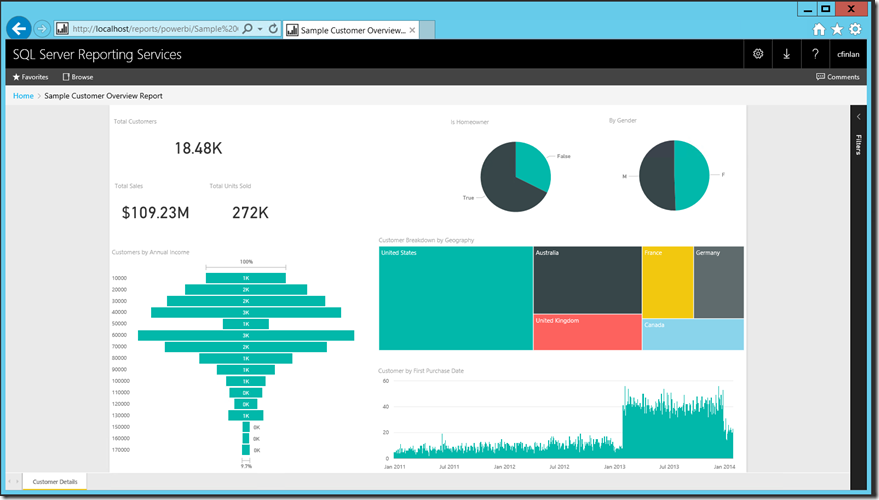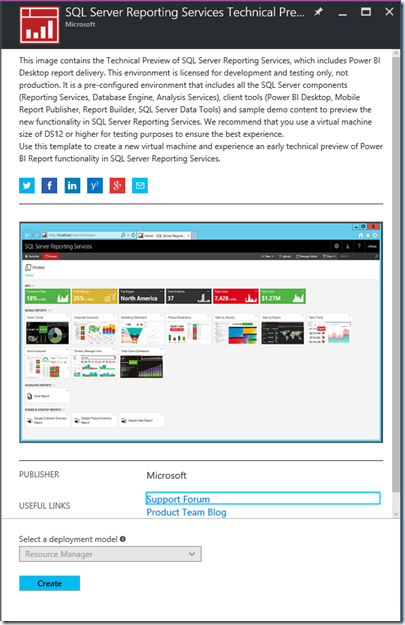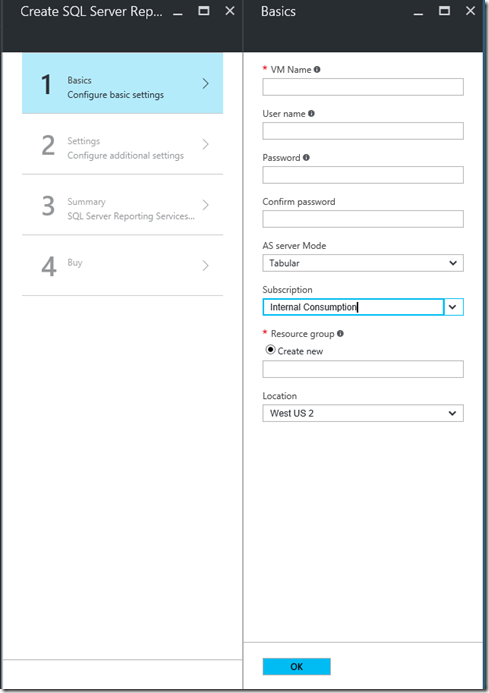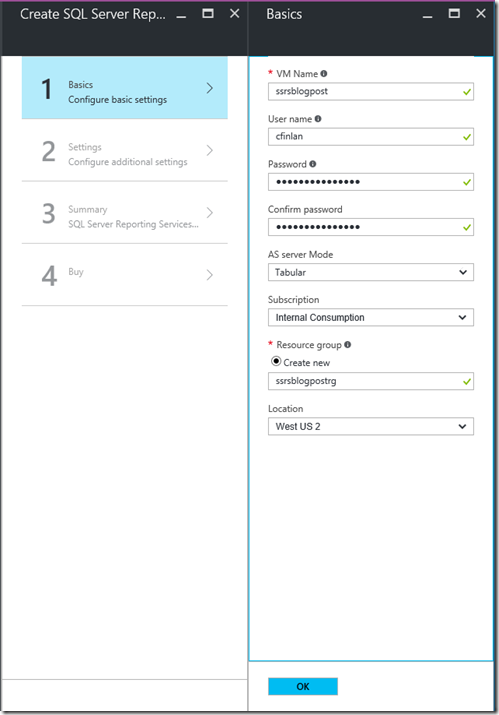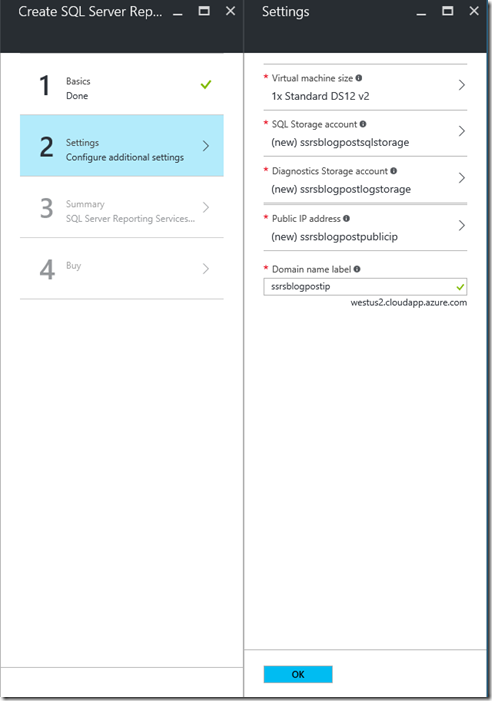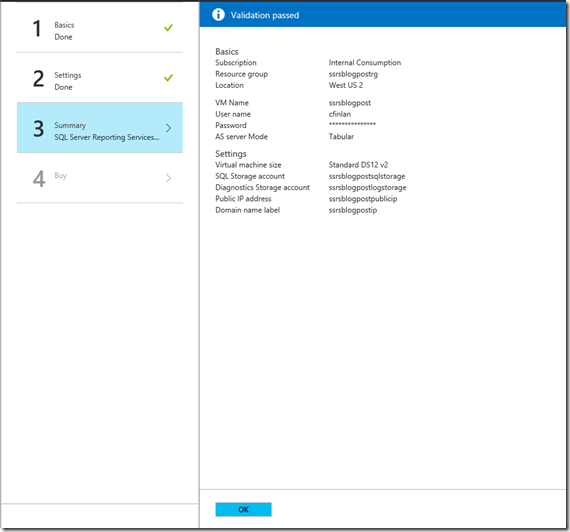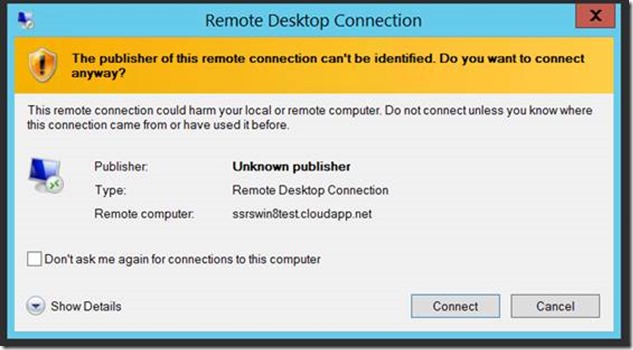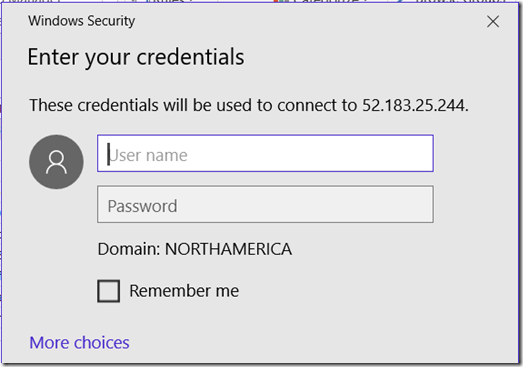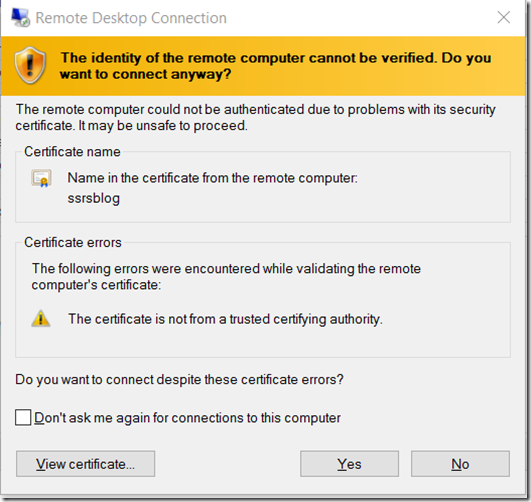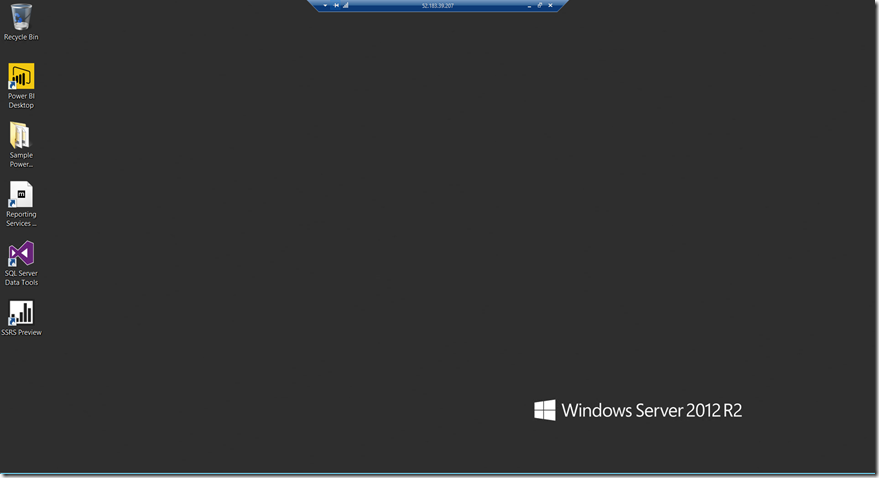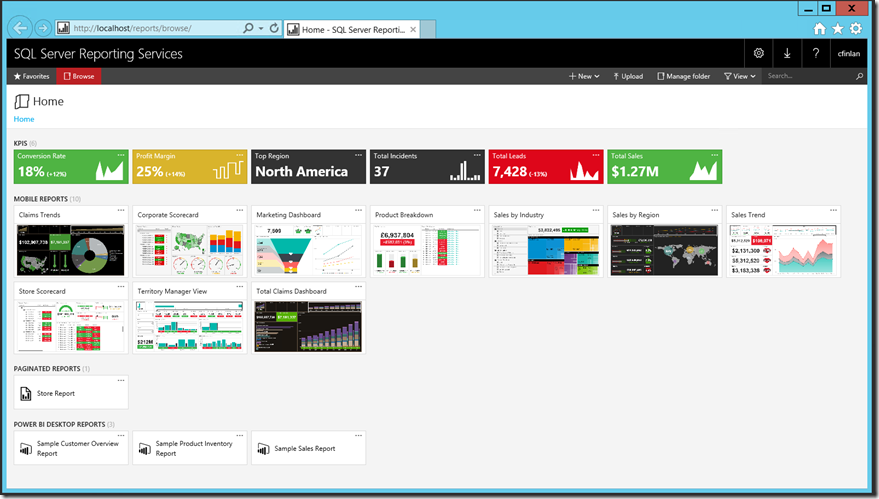Technical Preview of Power BI reports in SQL Server Reporting Services now available
NOTE: This blog post describes an early Technical Preview of Power BI reports running on SQL Server Reporting Services’s on-premises report server platform. In June 2017, we brought this technology to market as Power BI Report Server. For more info, check out A closer look at Power BI Report Server.
It’s finally here! Following our announcement Tuesday and subsequent session at PASS Summit 2016 this week, we’re pleased to announce the Technical Preview of Power BI reports in SQL Server Reporting Services is now available for you to try in the Azure Marketplace.
- Get it now in the Azure Marketplace
What is the Technical Preview?
As we brainstormed creative ways to let people try this functionality as early as possible, we had three very specific goals we wanted to achieve:
- Provide access to the new functionality publicly as early as possible while ensuring the end-user experience was something you’d find valuable
- Create a self-contained experience and environment that allowed users of any skill level an easy way to get started
- In no way disrupt or delay the initial preview of a downloadable and installable version
By using the Azure Marketplace to distribute this early technical preview, we feel we have not only met those goals, but also established a repeatable way to distribute content in the future. For users who would prefer to run this technical preview on an on-premises server, you are welcome to provision a virtual machine and then download the image as a .vhd file and use Hyper-V functionality to do so.
How to get started
You’ll need to have a Microsoft Azure subscription to get started with the technical preview. If you don’t already have an Azure account, you can create your free Azure account and get started with $200 in credit. To learn more about the free option please visit: https://azure.microsoft.com/en-us/free/. There is no cost associated with the technical preview software – you only need to pay for the Azure infrastructure costs.
By either doing a search in the Azure Marketplace for “Reporting Services” or using the link we provided earlier, you will start at the following screen to provision your virtual machine:
After clicking “Create”, you will begin the process of creating your new machine.
In Step 1, you will provide the following information. The items in bold are the default options:
- VM Name (must be lowercase)
- Admin username/password (Password must be at least 12 characters)
- Analysis Services Server Mode (Tabular or Multidimensional)
- Subscription Name (can only change if you have more than one Azure subscription)
- Resource Group Name (must be lowercase)
- Virtual Machine Location (select the region closest to your physical location for best results)
You will see a green checkmark to confirm any manual items you’ve entered are valid.
Once you’ve finished step 1, click OK to move to step 2.
In step 2, it is strongly recommended users less experienced with Azure leave the selections for Virtual Machine Size, Storage Accounts, Public IP address and Domain Name label as the default options. Click OK to proceed to the next step.
Step 3 gives you the opportunity to review your selections. If they look good, click OK to proceed to the final step.
Step 4 is the last step before purchasing. Simply read through the terms of use and click “Purchase”. That will provision the virtual machine, storage, demo content and other items needed to properly run your environment in Azure. Depending on the region you selected, it will take approximately 10-20 minutes to finish provisioning and be available for use.
Access your new virtual machine
To access your new VM, you can download and use the Remote Desktop shortcut from the Azure portal. The easiest way to access this is by navigating to the Virtual Machine section and clicking the “Connect” button in the toolbar.
You will be prompted to save the file, which is a shortcut you can use now and in the future to connect to your virtual machine. Select a location on your PC to save it to, then double-click on the downloaded file to connect. Once you do this, a dialog box may appear asking if you wish to connect, even though the remote computer can’t be identified. This is expected, and click Connect to proceed:
A pop-up dialog will appear like this one, where you will enter the admin username and password you chose during the setup process.
The domain needs to match the name of the machine you are connecting to. However, there is a trick to use to connect properly. Enter your username in the following manner:
This will make sure it doesn’t try to use the domain you’re currently on when you’re attempting to connect. After entering your password, click OK. Another prompt will launch, asking you if you’d like to verify the certificate provider and proceed connecting to the machine. Again, this is expected and you can simply hit “Yes” to continue.
You should now be connected to your VM via Remote Desktop and can begin using the virtual machine.
Opening the web portal and viewing your first Power BI report
When you first launch the machine, you should have the following items on your desktop:
- A folder with three sample Power BI Desktop files
- A shortcut to Power BI Desktop
- A shortcut to the SQL Server Reporting Services Team Blog
- A shortcut to SQL Server Data Tools
- A shortcut to the report server web portal on your VM
Double-click on the SSRS Preview icon to launch Internet Explorer. You will see several pieces of demo content already pre-loaded onto the machine, including three sample Power BI reports.
Click the “Sample Customer Overview Report”. This will launch the report in your web browser so you can view it with the same rich, interactive experience as in the Power BI service.
More to come tomorrow
We hope you enjoy this technical preview of these exciting new features. We’ll be back with part two tomorrow to cover more around the new functionality, including creating and editing new reports with Power BI Desktop, plus how to post comments on published reports.
Try it now and send us your feedback
- Get the Technical Preview from the Azure Marketplace
- Post in the Reporting Services forum (or if you prefer, send us an email)
- Join the conversation on Twitter: @SQLServerBI, #SSRS
